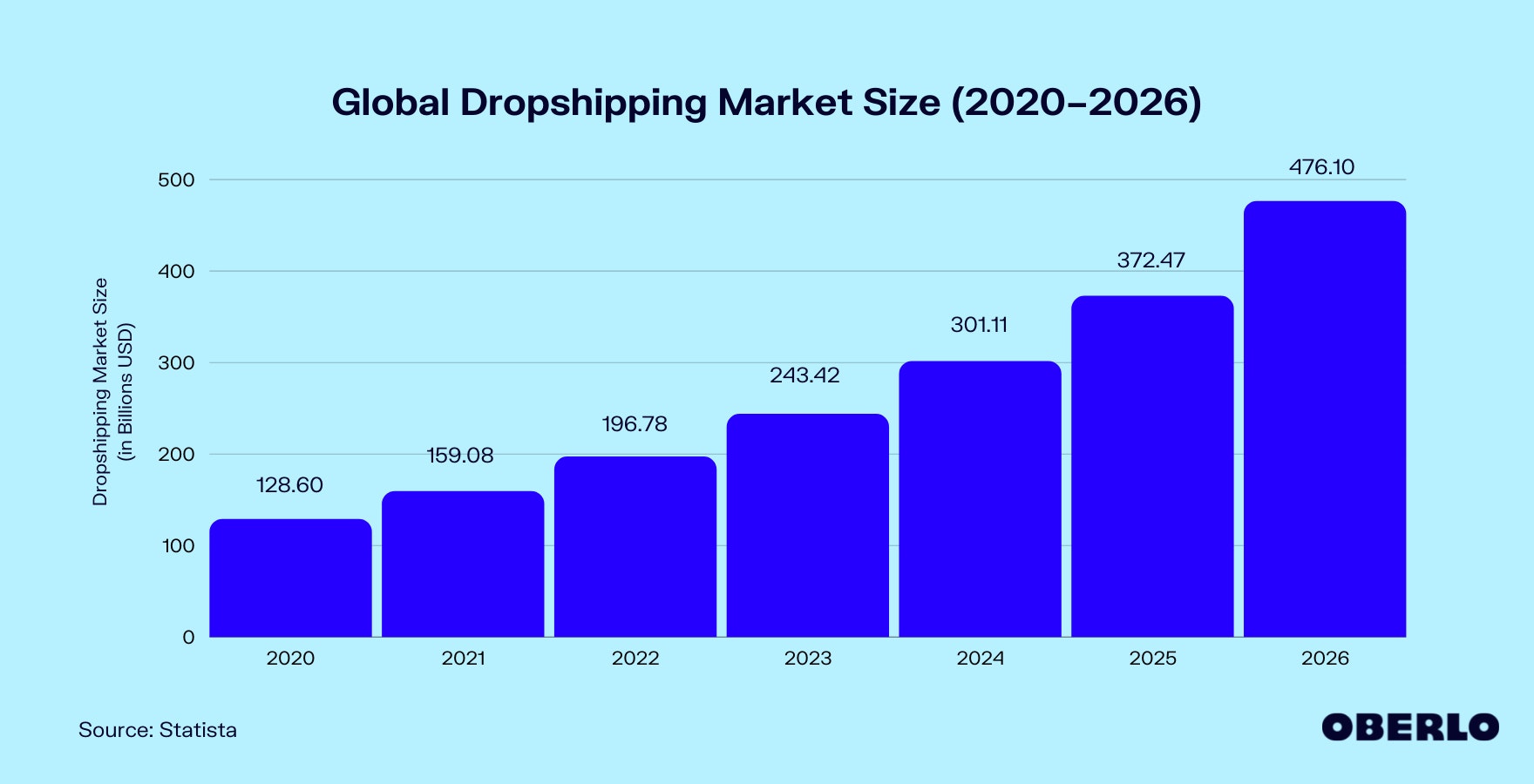
Dropshipping Market Size (2020–2026)
With its low start-up costs and inventory-free set-up, it’s not hard to see whydropshippinghas become one of themost popular online business modelsthese days.
According to the latest data, the global dropshipping market is forecast to reach$243.42 billionin 2023. This is also the first year it has surpassed $200 billion, after a 23.7% increase from 2022’s numbers.
That’s not all—this figure is projected to continue rising in the coming years, with the data pointing toward continued and rapid increase. The dropshipping market size is set for further growth, hitting $301.11 billion in 2024 and $372.47 billion in 2025.
Experts predict that by 2026, the dropshipping market size will be worth as much as $476.1 billion. To put things in perspective, this is more than 3.5 times its value in 2020 and an impressive $347.5 billion of growth in just a matter of six years.
From 2020 to 2026, the average annual growth rate of the dropshipping market size is expected to be 24.39%. The biggest increase will come in 2026, when it’s forecast to rise by 27.82%. Until then, from 2020 to 2025, the dropshipping market is expected to grow by 23.7%.
Should this momentum keep up, it will only be a matter of time before the dropshipping market size breaches the $500 billion mark, which could happen as early as 2027.



Dropshipping market growth: top drivers
Analysts creditthe dropshipping market size’s significant growth toconsumers’ shift toward online shopping. Ecommerce experienced a boom in 2020 and 2021 due to the coronavirus pandemic, which forced brick-and-mortar stores to close and consumers to stay home. Faced with such limitations, people had no other choice but to turn toonline shoppingto acquire products.
The rise ofmobile commerceand theincreasing smartphone penetrationglobally have also facilitated the pivot toward ecommerce and dropshipping services.
The ease ofstarting up a dropshipping business也导致了其不断增长的市场规模。Business owners do not need to hold inventory, which not only means there’s no need for storage space, but that there’s also no cost of acquiring goods upfront. This, in turn, substantially lowers the start-up costs of a dropshipping business.


